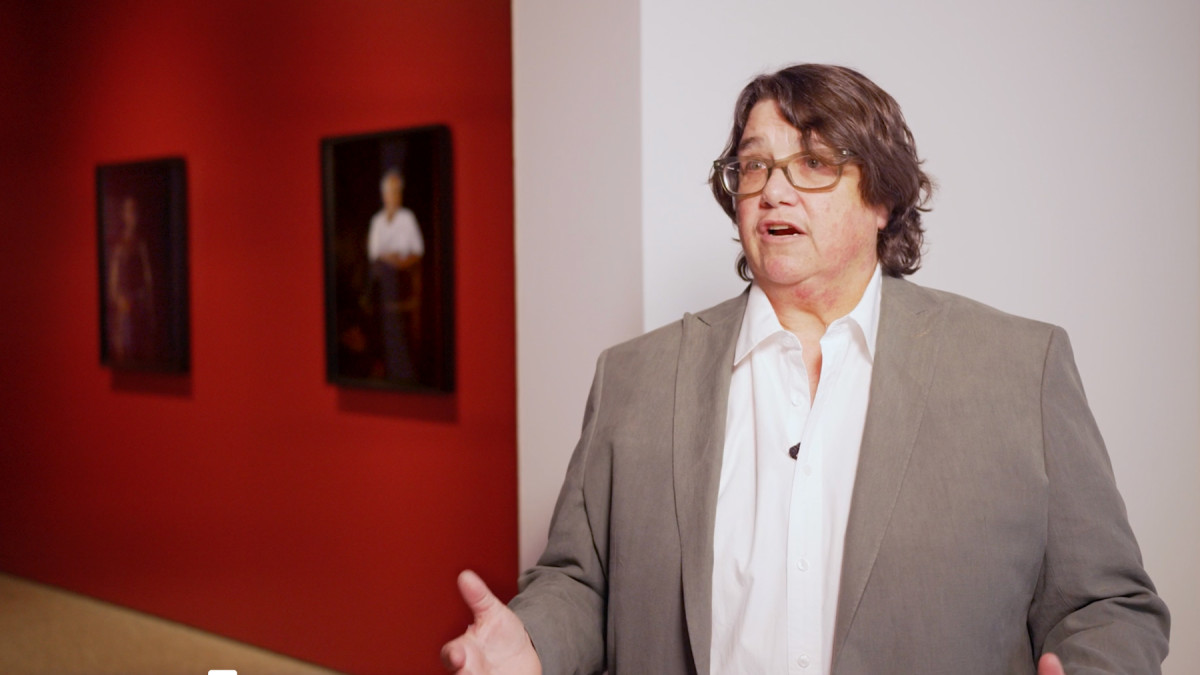Herculine's Profecy
2017 - Sculpture (Sculpture)
243.84 x 121.92 cm
Juliana Huxtable
Herculine’s Prophecy by Juliana Huxtable features a kneeling demon-figure on what appears to be a screen-print, placed on a wooden table, which has then been photographed and digitally altered to appear like a book cover, with a title and subtitle across the top, and a poem written across the bottom. This composition is stuck to a metal plate by a series of button magnets, with interjecting phrases on them. The juxtaposition between the mysogynistic, almost puritan poetry that stripes across the bottom and the powerful crouching pose that the femme demon assumes inverts the hegemonic text , instead creating a space of alterity. The semi-deconstructed book-cover, denotes the seepage of this potential ontological reality (contained within this unwritten book) into the world, allowing Juliana Huxtable’s creation an added layer of possibility.
Writer, artist, performer, and DJ Juliana Huxtable explores intersectional identity through her multidisciplinary practice, which seamlessly blurs the lines that typically separate methods of artistic production. Her work draws from her life experiences, as well as marginalized internet communities, oftentimes featuring hybrid humanoid forms that deeply probe representation of selfhood. In their self-consciously constructed visual ontologies, Huxtable develops a double edged practice that is, on the one hand, a critique of systemic sexist and misogynist power structures, body disassociation and dysmorphia, and on the other, a world-making that frames the radical potential of new technology. Avoiding concrete conclusions, these potentialities become propositions and provocations with which the audience must grapple.
Colors:
Related works featuring themes of: » Bright/Vivid, » Cinematic, » Color Photography, » Feminism, » American

© » KADIST
Catherine Opie
1994Although best known as a provocateur and portraitist, Opie also photographs landscapes, cityscapes, and architecture...

© » KADIST
Catherine Opie
1987In this work, a woman sits on a couch with her shirt pulled up to expose her pierced nipples, which are connected by a chain...

© » KADIST
Andrea Bowers
2010The small drawings that comprise Study from May Day March, Los Angeles 2010 (Immigration Reform Now) and We Are Immigrants Not Terrorists are based on photographs taken at a political rally in downtown Los Angeles in which thousands of individuals demonstrated for immigrants’ rights...

© » KADIST
Regina José Galindo
La Sombra (The Shadow) is a video of Regina Jose Galindo performing with a moving Leopard tank...

© » KADIST
Catherine Opie
1987Catherine Opie’s candid photograph Cathy (bed Self-portrait) (1987) shows the artist atop a bed wearing a negligee and a dildo; the latter is attached to a whip that she holds in her teeth...

© » KADIST
Scott Reeder
2013Reeder’s works often start with language—and his Pasta Paintings are no different...

© » KADIST
Regina José Galindo
2013In 2012, former Guatemalan President José Efran Ros Montt was charged with genocide and crimes against humanity; Regina José Galindo’s video Tierra is a chilling reimagining of the atrocities recounted during his trial...

© » ROYAL ACADEMY
Catherine Opie
Video: Catherine Opie on photographing leading British artists | Blog | Royal Academy of Arts Catherine Opie in the RA Collection Gallery Video: Catherine Opie on photographing leading British artists Read more Become a Friend Video: Catherine Opie on photographing leading British artists Published 8 September 2023 Catherine Opie discusses her portraits of David Hockney, Anish Kapoor, Gillian Wearing, Isaac Julien and Lynette Yiadom-Boakye, featured in our free display in the Collection Gallery...

© » KADIST
James Welling
2005#17 Pink is a photogram, a photographic image produced without the use of a camera...

© » KADIST
James Welling
2006Welling employs simple materials like crumpled aluminum foil, wrinkled fabric and pastry dough and directly exposes them as photograms, playing with the image in the process of revealing it...

© » KADIST
Shahzia Sikander
2010The Last Post was inspired by Sikander’s ongoing interest in the colonial history of the sub-continent and the British opium trade with China...

© » KADIST
Nathaniel Dorsky
2010Dorsky’s pieces included in the Kadist Collection are small still photographs from twelve of his most important films...

© » KADIST
Matt Lipps
2011In the series Horizons (2010), Lipps uses appropriation to riff on Modernism’s fascination with abstract form...

© » KADIST
Claudia Joskowicz
2014Los rastreadores is a two-channel video by Claudia Joskowicz narrating the story of a fictitious drug lord, Ernesto Suarez, whose character is based on the well-known Bolivian drug dealer, Roberto Suárez...






